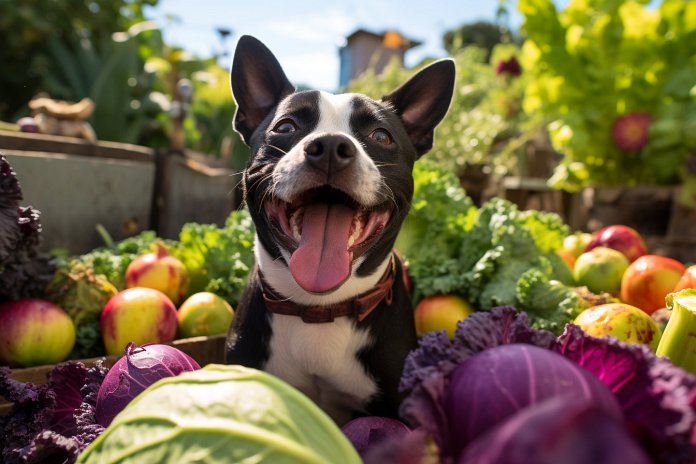
Knowing which veggies are safe and healthy for your dog is important. While it may be tempting to give your dog food scraps, it’s crucial to do your research before giving them any human “treats”. Beets are a root vegetable that both humans and dogs can enjoy.
Signs Your Dog Can Taste Beets
Just because beets are safe for dogs doesn’t mean they’ll like them. Start with a small amount and observe their reaction. To prepare beets for your dog, wash, peel, and slice them. You can bake, roast, or dehydrate them. It’s recommended to puree or chop the beets finely to aid digestion.
Body Language
Signs your dog can taste beets include alertness, head tilting, sniffing, and nose licking. Other signs that your dog likes beets include begging, eating them quickly, and coming back for more.
History Behind Dogs Eating Beets
Beets may not be the first vegetable that comes to mind for dog food, but they are tasty and nutritious. Dogs’ taste buds have evolved based on their diet, which now includes both meats and vegetables.
Science Behind Feeding Your Dog Beets
Beets are rich in vitamins A, B1, B2, B6, and C, as well as calcium, magnesium, copper, phosphorous, sodium, and iron. They also contain choline, folic acid, iodine, manganese, potassium, fiber, and natural sugars. However, avoid canned beets due to high sodium content, which can be toxic to dogs.
Training Your Dog to Taste Beets
Dogs have different food preferences, so some may enjoy beets while others may not. To see if your dog likes beets, offer them a small amount and observe their reaction. Beets won’t harm dogs, but they may not provide significant health benefits. If your dog is a picky eater, you may need to mix small bits of beets with their food. Pay attention to their reaction and don’t force it.
“Beets: A Nutritious Treat for Your Pup, But Proceed with Caution”

Tips & Things to Know
1️⃣ Before giving your dog any kind of human “treat”, make sure to research which vegetables are safe and healthy for them. Beets are a wonderful option, but be cautious of potential hazards such as obstructions and choking.
2️⃣ Start by giving your dog a small amount of beets to see how they react. Wash, peel, and cook the beets before feeding them to your dog, as this makes them easier to digest. Be mindful of the high oxalic acid content and potential allergies, and consult your vet if necessary.
3️⃣ Pay attention to your dog’s body language to see if they enjoy beets. Signs that they can taste beets include alertness, head tilting, sniffing, and nose licking. Other signs that they like beets include begging, eating them quickly, and coming back for more. Remember that not all dogs may enjoy beets, so don’t force it if they don’t show interest.
Frequently Asked Questions, Answered ✅
1. What are the potential hazards of feeding raw beets to dogs?
– Raw beets can lead to an obstruction in the small intestine and pose a choking hazard. It is best to chop and cook them before feeding them to your dog.
2. How can I prepare beets for my dog?
– Wash and scrub the beets to remove dirt, then peel and slice them. They can be baked, roasted, or dehydrated. Puree or chop them finely to make it easier for your dog to digest.
3. What are the risks of feeding too many beets to my dog?
– Beets are high in oxalic acid, which can lead to kidney stones and a calcium deficiency if consumed in excess. Feed beets sparingly, especially if your dog has kidney stones, gout, rheumatoid arthritis, osteoporosis, or a sensitive stomach.
4. What are the signs that my dog can taste beets?
– Signs that your dog can taste beets include alertness, head tilting, sniffing, and nose licking.
5. Are beets beneficial for dogs?
– Beets are loaded with vitamins and minerals, such as A, B1, B2, B6, C, calcium, magnesium, copper, phosphorous, sodium, and iron. They also provide choline, folic acid, iodine, manganese, potassium, fiber, and natural sugars. However, dogs may not receive the same health benefits from beets as humans do.